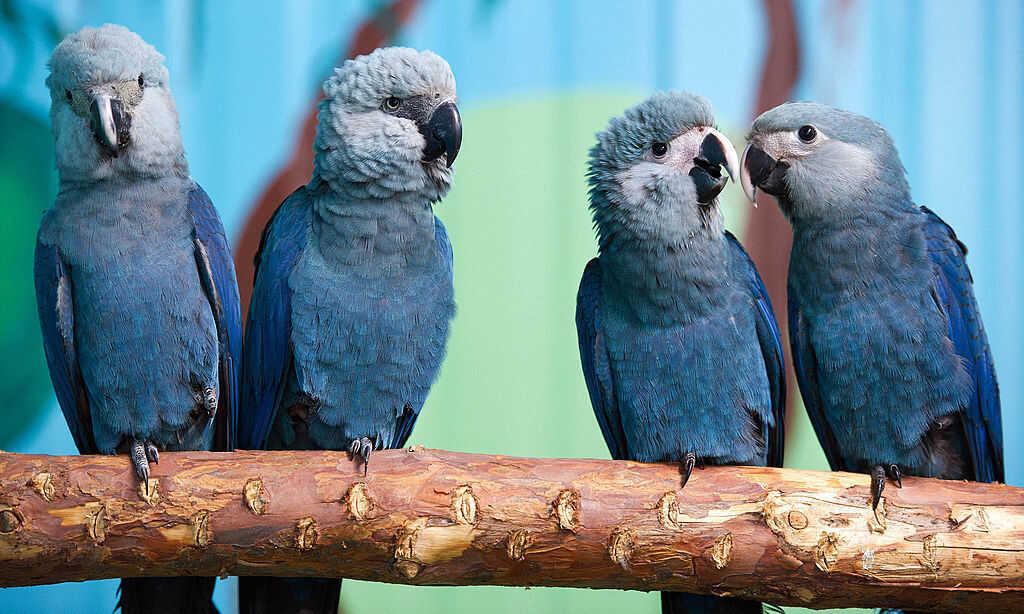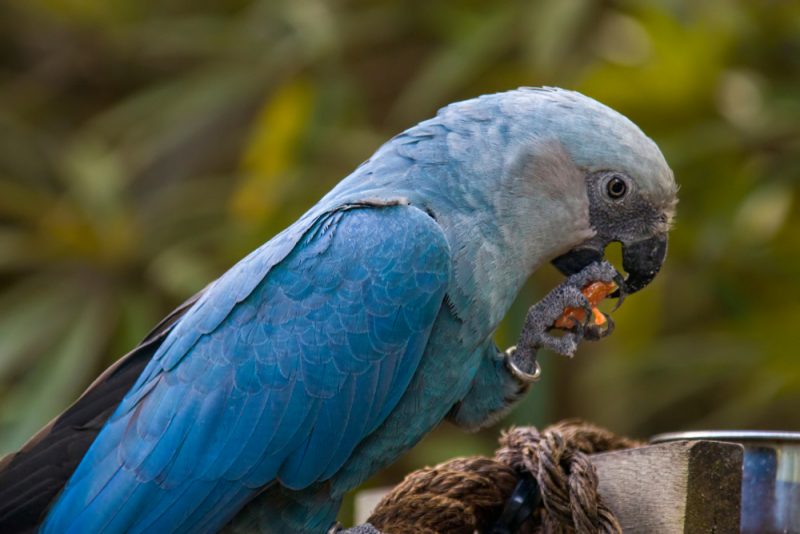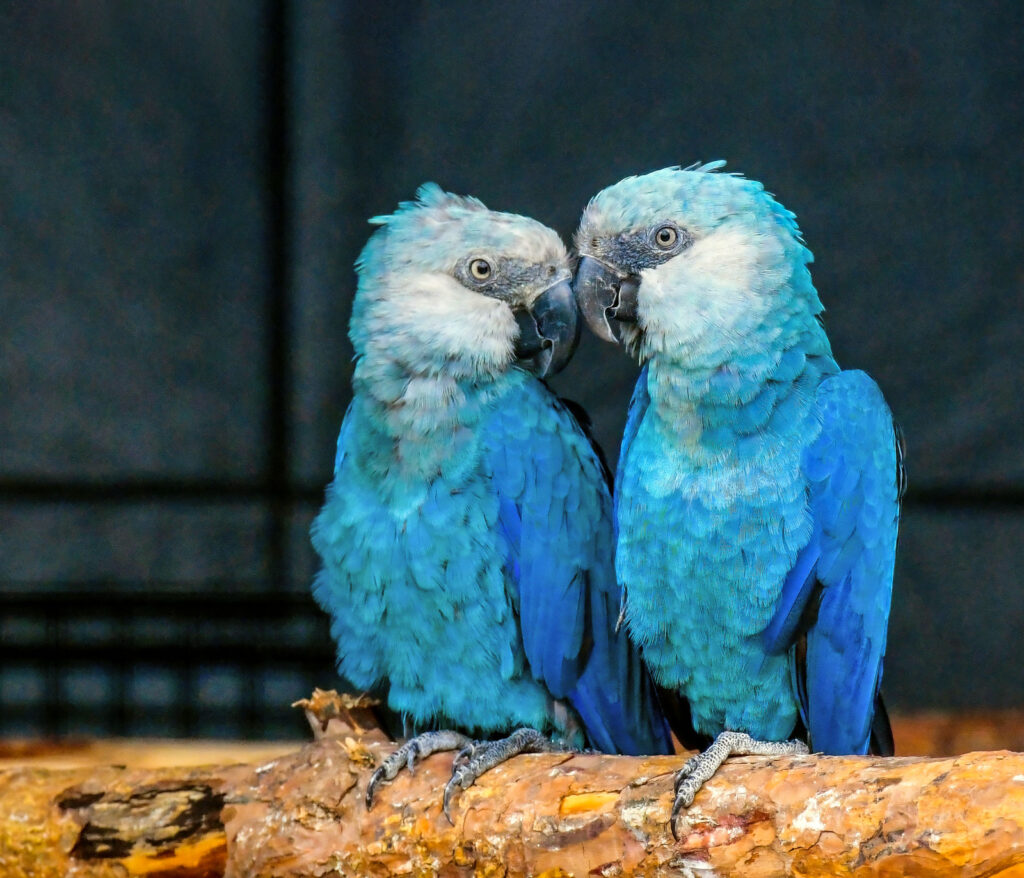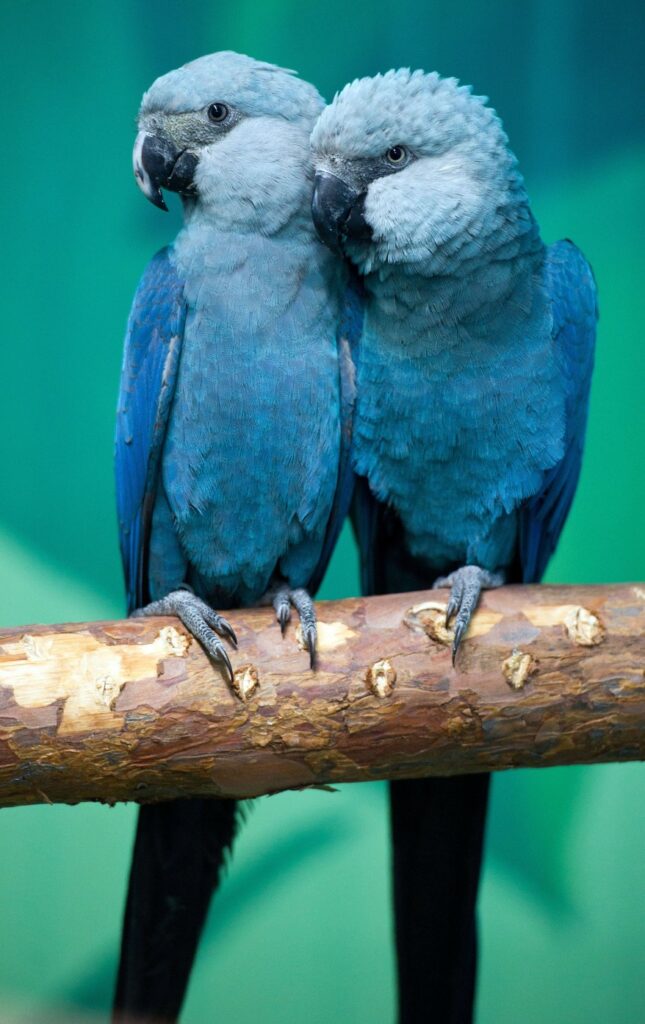Spix’s Macaw
Introduction:
The Spix’s Macaw, scientifically known as Cyanopsitta spixii, also known as the Little Blue Macaw, is a striking and critically endangered parrot species is a rare and striking species of parrot native to Brazil. It gained international attention and, unfortunately, notoriety due to its critical endangerment and near-extinction in the wild.

Taxonomy:
- Kingdom: Animalia
- Phylum: Chordata
- Class: Aves
- Order: Psittaciformes
- Family: Psittacidae
- Genus: Cyanopsitta
- Species: Cyanopsitta spixii
Physical Characteristics:
- Size: Spix’s Macaw is a medium-sized parrot, measuring around 55 centimeters (21.5 inches) in length.
- Coloration: The plumage of the Spix’s Macaw is predominantly blue, with a slightly paler shade on the underparts. It has a distinctive facial mask with bare lines of skin around the eyes, which are pale yellow.
- Voice: These birds are known for their loud and raucous calls, which they use for communication. Their vocalizations play a crucial role in their social interactions.
- Weight: The average weight of an adult Spix’s Macaw is approximately 300 to 400 grams (10 to 14 ounces).
Habitat:
Historically, Spix’s Macaw was found in the gallery forests along the Rio São Francisco in Brazil. However, due to habitat destruction and fragmentation, the natural habitat of these birds has been greatly reduced.
Diet:
The diet of Spix’s Macaw in the wild consists mainly of a variety of native fruits, seeds, nuts, and vegetation. They are known to feed on a range of food sources, including the seeds of Euphorbia trees, palm fruits, and other fruits found in their natural habitat they are Herbivores (granivores, frugivores).

Lifespan:
The lifespan of Spix’s Macaw in the wild is not precisely documented, but in captivity, they can live up to 20-30 years or more. The exact lifespan can be influenced by various factors such as diet, living conditions, veterinary care, and genetic factors. In the wild, the lifespan may be shorter due to environmental threats, predation, and challenges related to their natural habitat.
Mating behavior:
Monogamous
Spix’s Macaws are known to form strong and monogamous pair bonds, often lasting for life.
(Monogamous refers to a mating system in which an individual forms a long-term pair bond with only one mate.)
Egg Laying and Incubation:
Egg Laying: The female Spix’s Macaw typically lays a clutch of eggs, usually ranging from two to four eggs. The eggs are laid a few days apart. The female may lay one egg every two to three days until the clutch is complete.
Incubation: Both the male and female take turns incubating the eggs. The incubation period typically lasts for about 24 to 28 days, during which the parents keep the eggs warm to facilitate the development of the embryos.

Population:
The Spix’s Macaw (Cyanopsitta spixii) is one of the rarest and most endangered parrot species in the world. It was declared extinct in the wild in 2000, primarily due to habitat loss and illegal trapping for the pet trade. As of 2022 there are approximately 177 Spix’s macaws in captivity.
Conservation Status:
While the IUCN Red List views its status as Critically Endangered and possibly extinct in the wild
Conservation Efforts:
- Captive Breeding: Conservation programs have focused on breeding Spix’s Macaws in captivity to establish a viable population that could eventually be reintroduced into the wild.
- Reintroduction: Reintroduction efforts have been carried out in the remaining fragments of their native habitat, with the goal of reestablishing a self-sustaining population.
- Habitat Protection: Efforts have been made to protect and restore the remaining fragments of the Spix’s Macaw’s natural habitat to ensure a suitable environment for their reintroduction.
Challenges:
- Habitat loss, illegal pet trade, and a small remaining wild population are significant challenges facing the survival of Spix’s Macaw.
Success Stories:
- In 2022, there have been reported successes in captive breeding and reintroduction efforts, with some individuals being released into the wild.


3 thoughts on “Spix’s Macaw”
I have been exploring for a little for any high-quality articles or blog posts on this sort of area . Exploring in Yahoo I at last stumbled upon this website. Reading this info So i am happy to convey that I have a very good uncanny feeling I discovered just what I needed. I most certainly will make certain to do not forget this site and give it a glance on a constant basis.
Just want to say your article is as astounding. The clarity on your submit is just great and that i could assume you’re a professional in this subject. Fine together with your permission allow me to snatch your feed to stay up to date with imminent post. Thank you a million and please continue the enjoyable work.
Hey very nice web site!! Man .. Excellent .. Amazing .. I will bookmark your web site and take the feeds also…I’m happy to find a lot of useful information here in the post, we need work out more techniques in this regard, thanks for sharing. . . . . .